Wide Area Distribution System
using commercial routers as
"wireless clients"
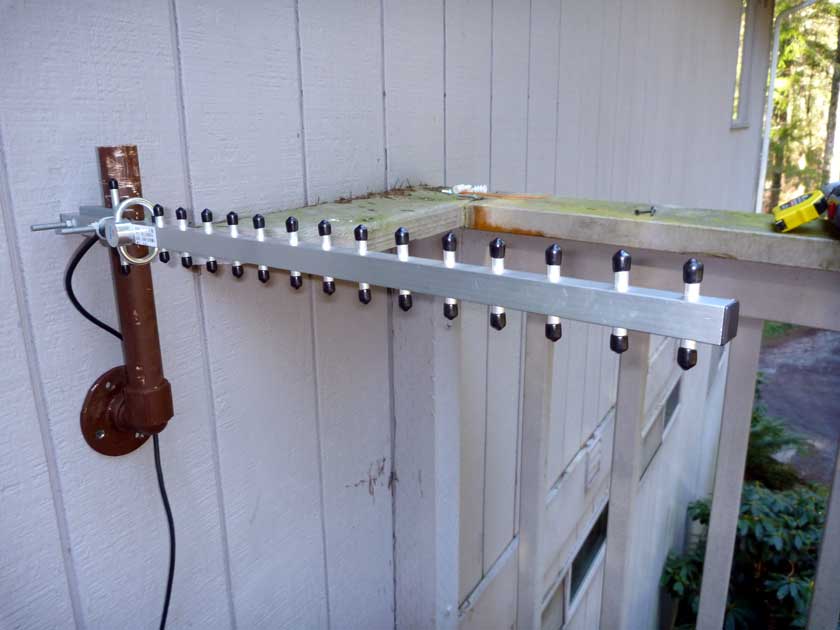
14 Element Yagi at the main house access point.
Directed to the Parabolic antenna in the picture on the right at the prow house and also at the the garage antenna below.
This is main feed point of the WDS WiFi distribution system using two routers and directional antennas to link three buildings
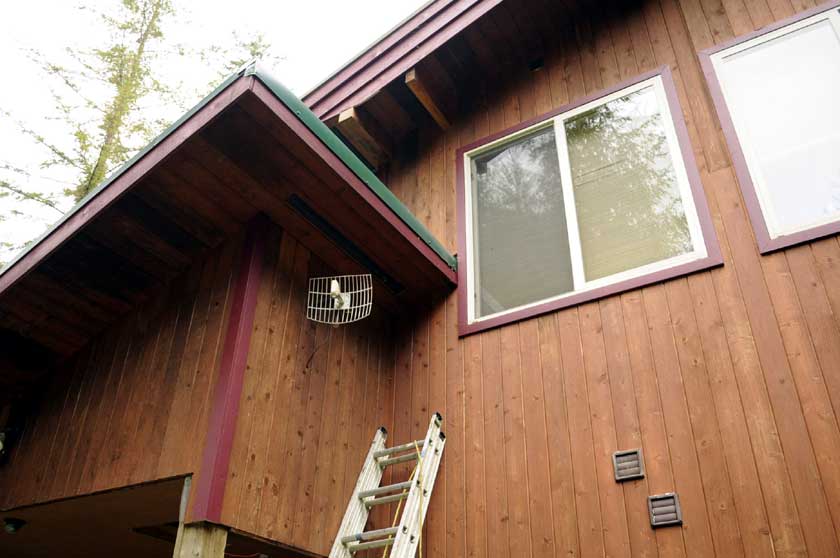
24db WiFi Parabolic at the other end of the 200' link
...on the Prow house
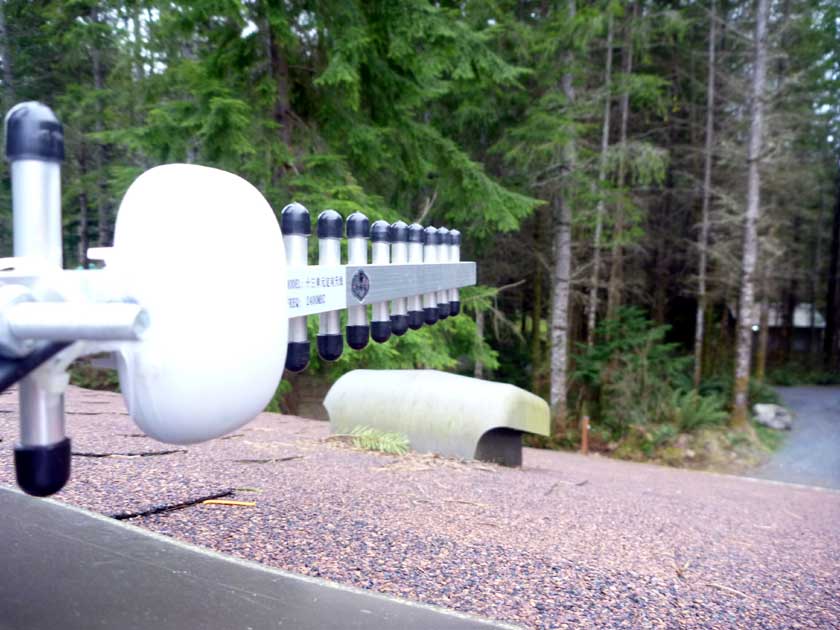
Garage Yagi test antenna.
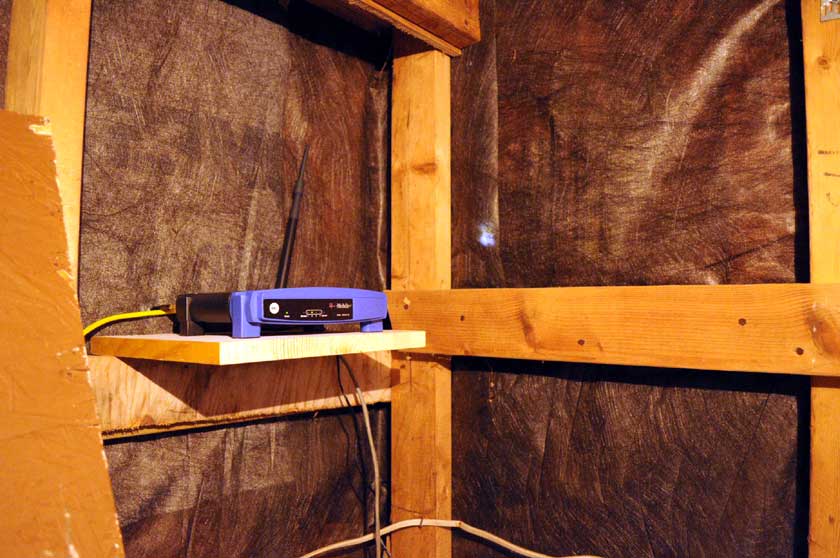
Prow house node above the carport. The parabolic antenna is on the other side of the wall. Short antenna leads are the rule when working with Wifi signals.
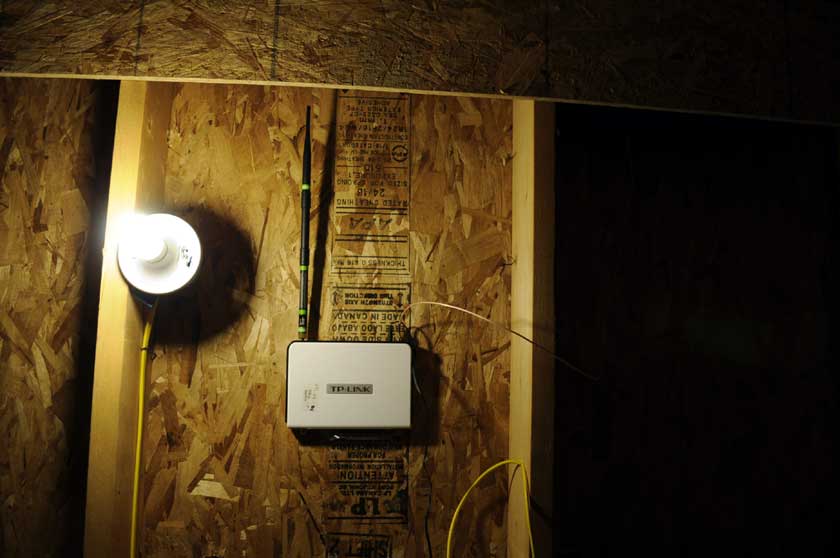
Garage/Apartment WDS node in the attic storage space. Cable leads outside to
Yagi antenna.
This is an off-the-shelf TP-Link router
We used Yagi and Parabolic antennas because of their ability to focus a lot
of Wifi power in one direction.
View a shot of the cat inspecting a pair of TP-Link
Routers
The TP-Link Routers began to exhibit a bad characteristic.
The user interface became unavailable after two
successive
re-boots.
Thus the search for a more reliable system.
Ubiquiti Networks airmax components
were chosen for evaluation.
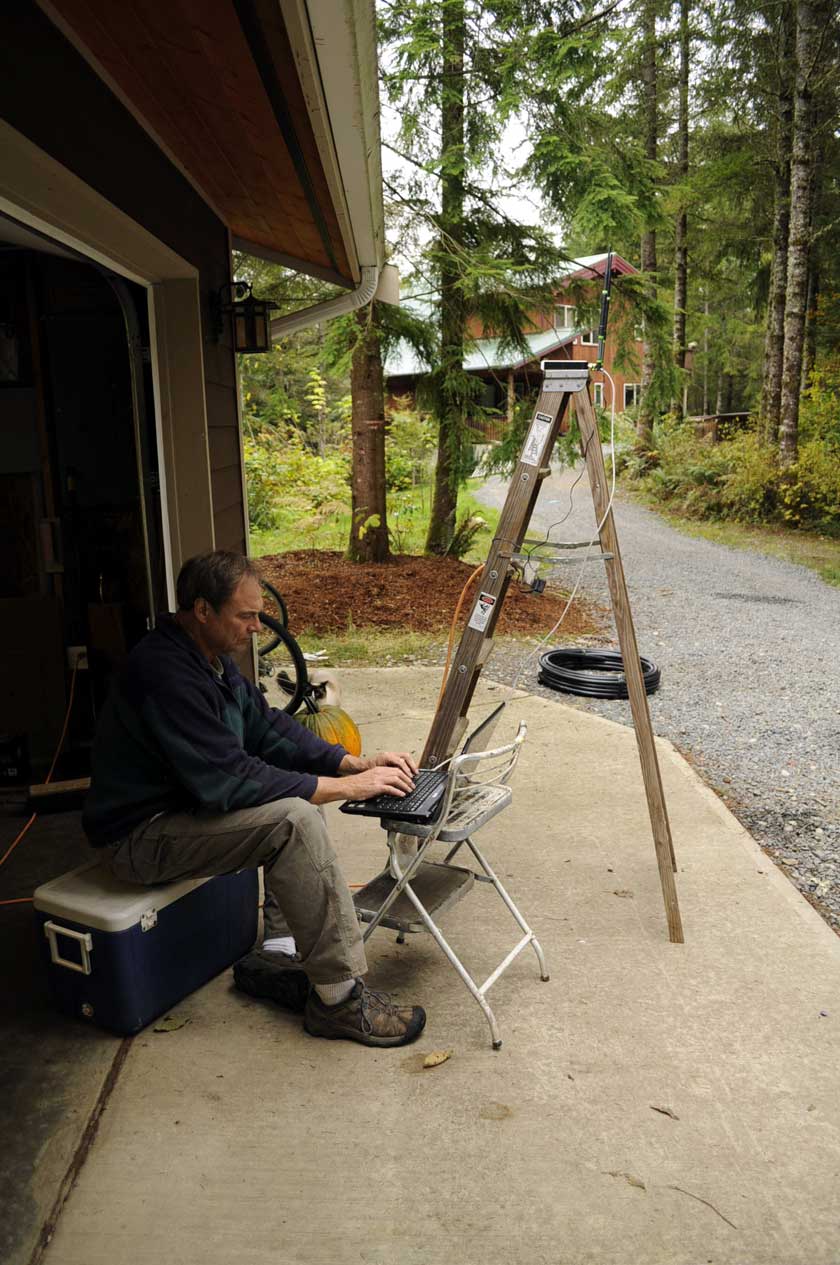
Shot of the network administrator doing some initial signal testing in front of the garage/apartment.
Note the prow house in the background and TP-Link router on top of the ladder.
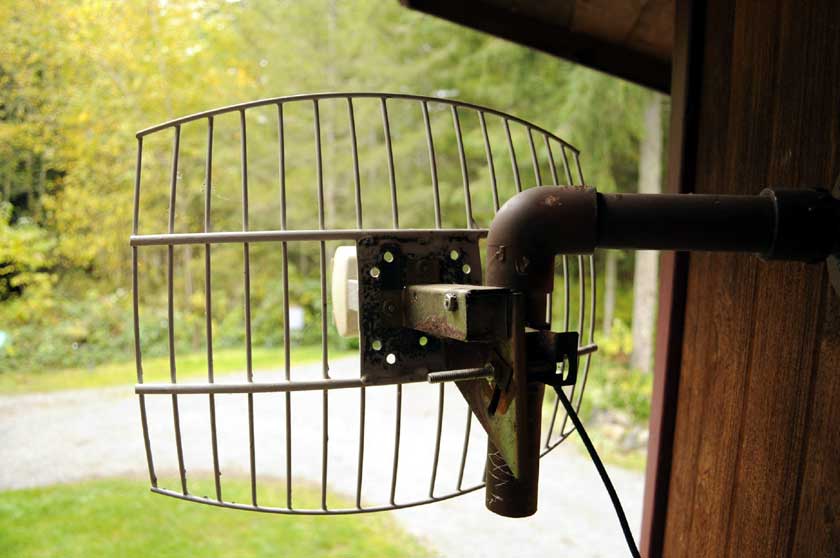
Prow house antenna pointing down the hill to the access point.
Measurements showed a very nice 24 db signal at the Prow house.
Wifi signals at 2.4 Ghz do not like anything but a clear line of sight link.
The RF power of the routers was "upped" to ensure a reliable link.
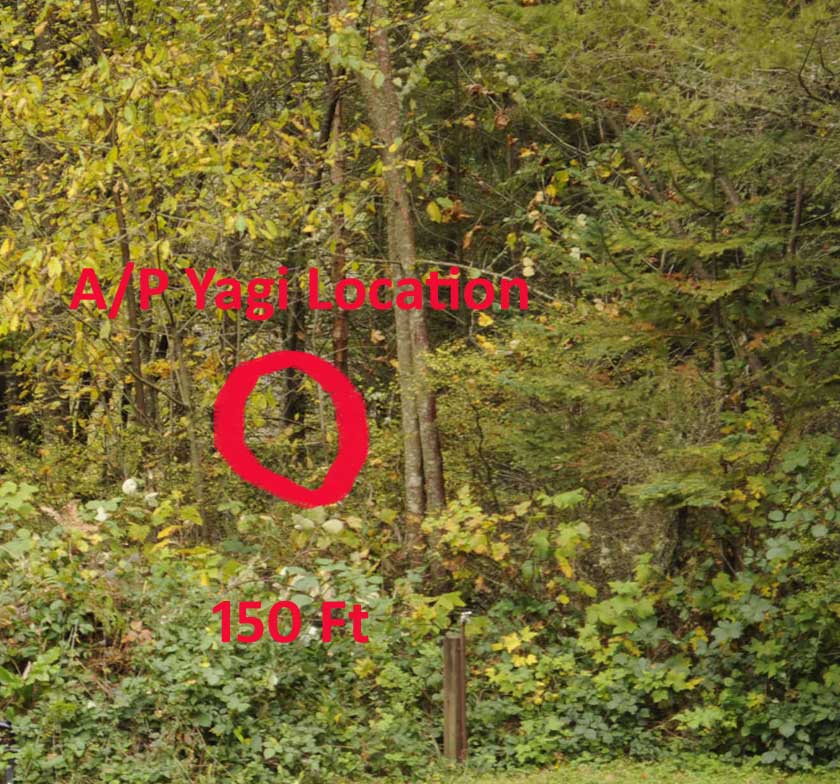
Close-up of the vegetation between the Prow house and the access point antenna.
Ttrees and leaves between the two--but it works.